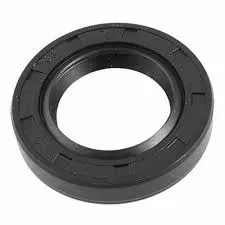10 月 . 20, 2024 21:49 Back to list
Choosing the Right Pipe Rubber Gasket for Your Plumbing Needs
Understanding Pipe Rubber Gaskets Importance and Applications
Pipe rubber gaskets play a crucial role in ensuring the integrity and functionality of various plumbing and piping systems. These components provide a reliable seal between two surfaces, preventing leaks and maintaining the pressure within pipes. In this article, we will explore the significance of pipe rubber gaskets, their types, applications, and best practices for installation and maintenance.
What are Pipe Rubber Gaskets?
Gaskets are mechanical seals that fill the space between two or more mating surfaces to prevent leakage. Pipe rubber gaskets are typically made from flexible rubber materials, which allows them to compress and conform to the surfaces they are sealing. This elasticity is essential because it accommodates the natural movements of pipes due to thermal expansion, vibrations, or settling.
Rubber gaskets can be made from various types of rubber, including Natural Rubber (NR), Nitrile Rubber (NBR), Ethylene Propylene Diene Monomer (EPDM), and Silicone, each offering distinct properties suitable for different environments and applications.
Importance of Pipe Rubber Gaskets
1. Leak Prevention The primary function of a rubber gasket is to prevent leakage. In plumbing systems, even a small leak can lead to significant water loss, increased utility bills, and potential damage to surrounding structures.
2. Pressure Maintenance Many piping systems operate under high pressure. Rubber gaskets help maintain this pressure by sealing the joints between pipes, which is crucial in applications such as water supply, gas lines, and industrial processes.
3. Vibration Absorption Pipes often experience vibrations due to fluid movement or machinery operation. Rubber gaskets can help absorb these vibrations, preventing damage to the pipes and joints over time.
4. Corrosion Resistance Certain rubber materials are resistant to chemicals and corrosion, making them ideal for use in environments where pipes may be exposed to harsh substances.
Types of Pipe Rubber Gaskets
1. Flat Gaskets These are the most common type and are used in simple joints where a flat sealing surface is available.
2. O-Ring Gaskets These are circular gaskets that fit into a groove and provide a seal when compressed. They are widely used in hydraulic and pneumatic systems.
pipe rubber gasket

3. Spiral Wound Gaskets These gaskets consist of alternating layers of metal and rubber. They can withstand high pressures and temperatures, making them suitable for industrial applications.
4. Full Face Gaskets These cover the entire flange surface and provide a larger sealing area, often used in flanged pipe connections.
Applications of Pipe Rubber Gaskets
Pipe rubber gaskets are used across various industries, including
- Water and Wastewater Treatment Ensuring leak-free connections in treatment plants and distribution systems. - Oil and Gas Sealing pipe joints in pipelines and refineries, where durability is essential. - Chemical Processing Providing resistance to corrosive substances in chemical plants. - HVAC Systems Sealing joints in heating, ventilation, and air conditioning systems.
Best Practices for Installation and Maintenance
1. Proper Surface Preparation Ensure that the surfaces are clean, smooth, and free of debris before installing a gasket. Any dirt or imperfections can compromise the seal.
2. Correct Torque Settings When using bolts to secure the gaskets, follow the manufacturer's recommended torque specifications to avoid over-compressing or under-compressing the gasket, which could lead to leaks.
3. Regular Inspections Check gaskets periodically for signs of wear, such as cracking, hardening, or distortion. Early detection of issues can prevent costly leaks and repairs.
4. Choose the Right Material Select a gasket material that suits the specific application and the environmental conditions it will face, including temperature and chemical exposure.
Conclusion
In conclusion, pipe rubber gaskets are essential components in ensuring the efficiency and reliability of piping systems across various industries. Understanding their importance, types, applications, and maintenance practices helps in selecting the right gaskets for specific needs, ultimately contributing to system longevity and performance. As technology and materials evolve, staying informed about advances in gasket technology can further enhance the effectiveness of sealing solutions in diverse environments.